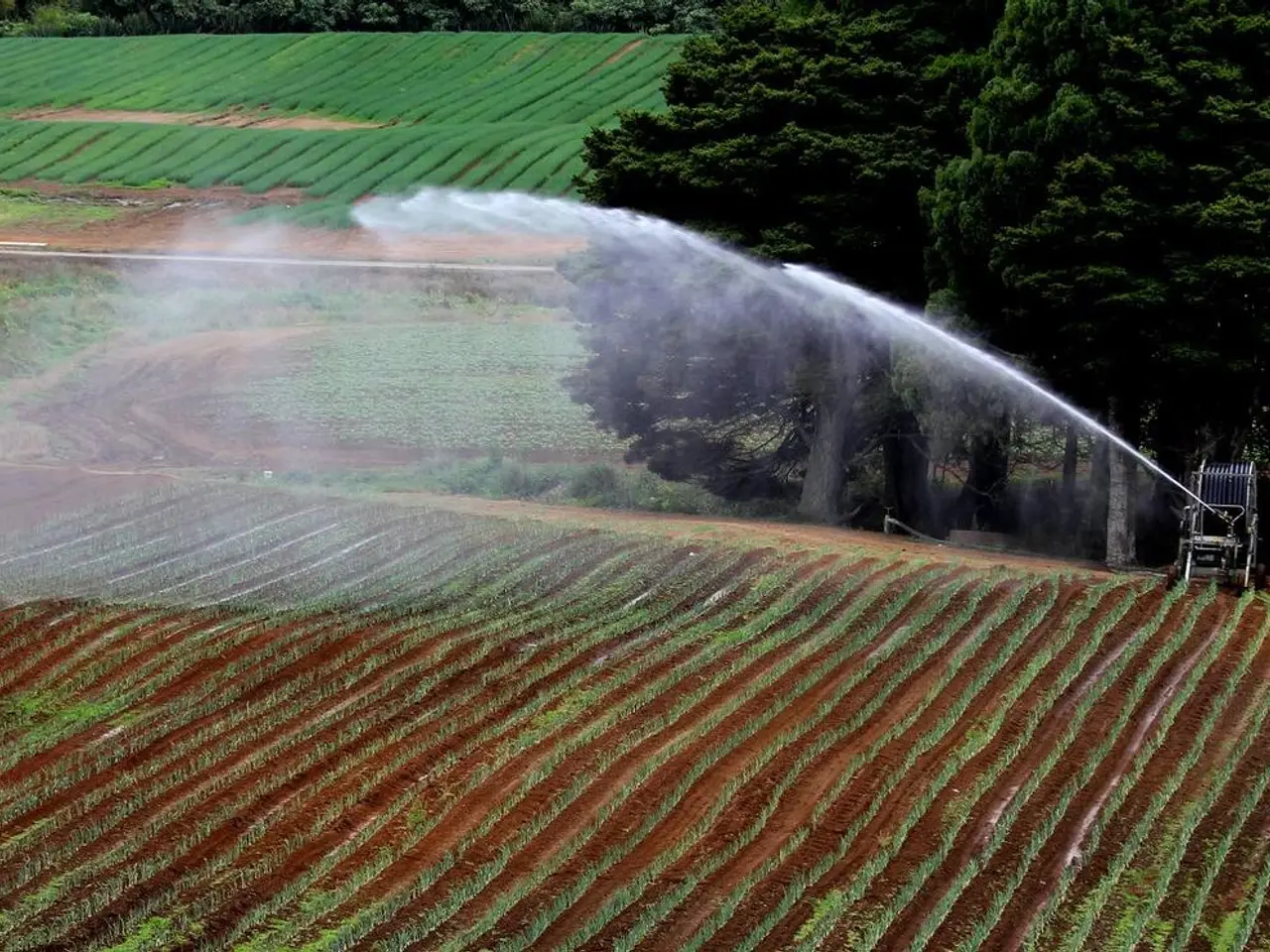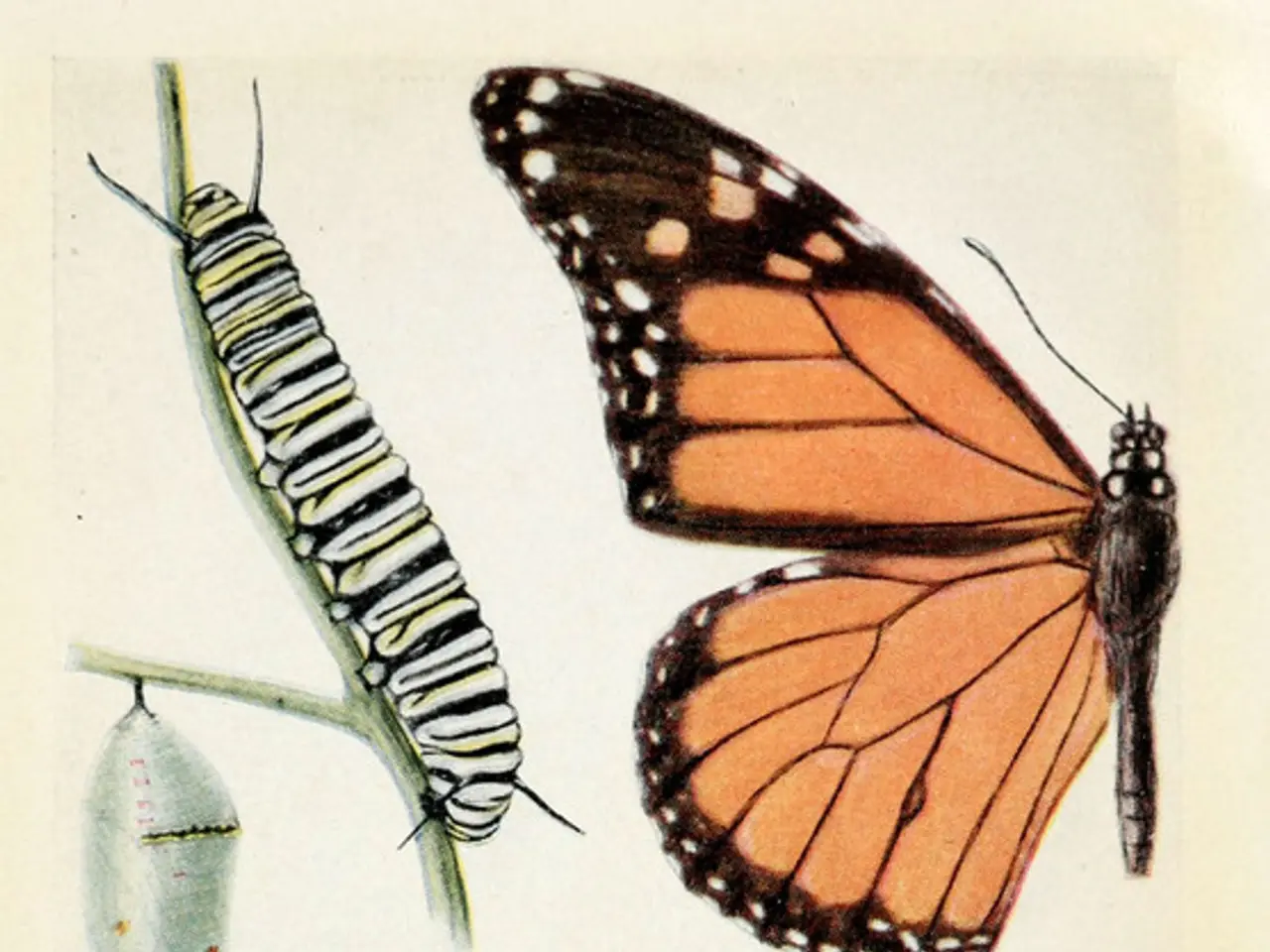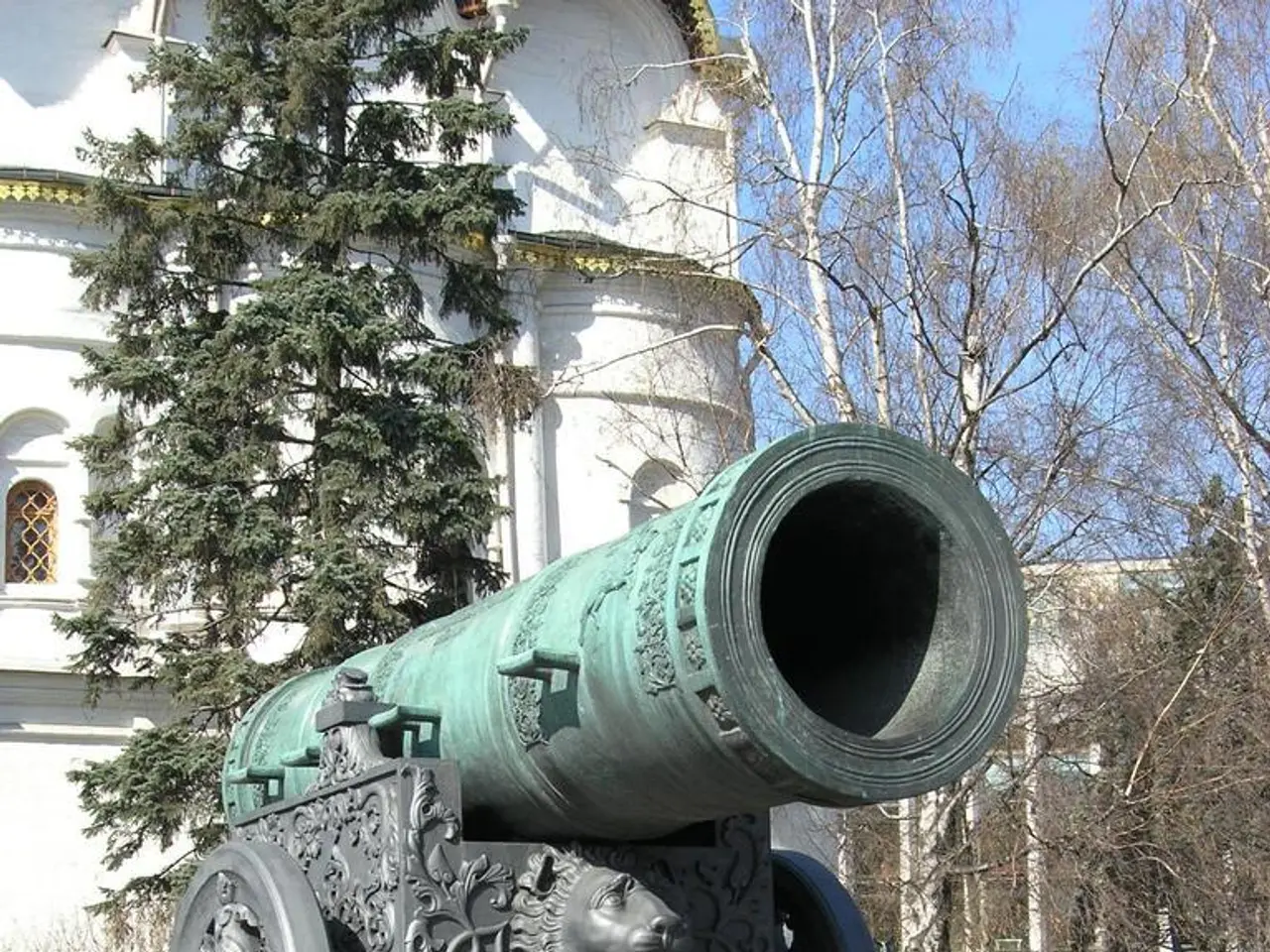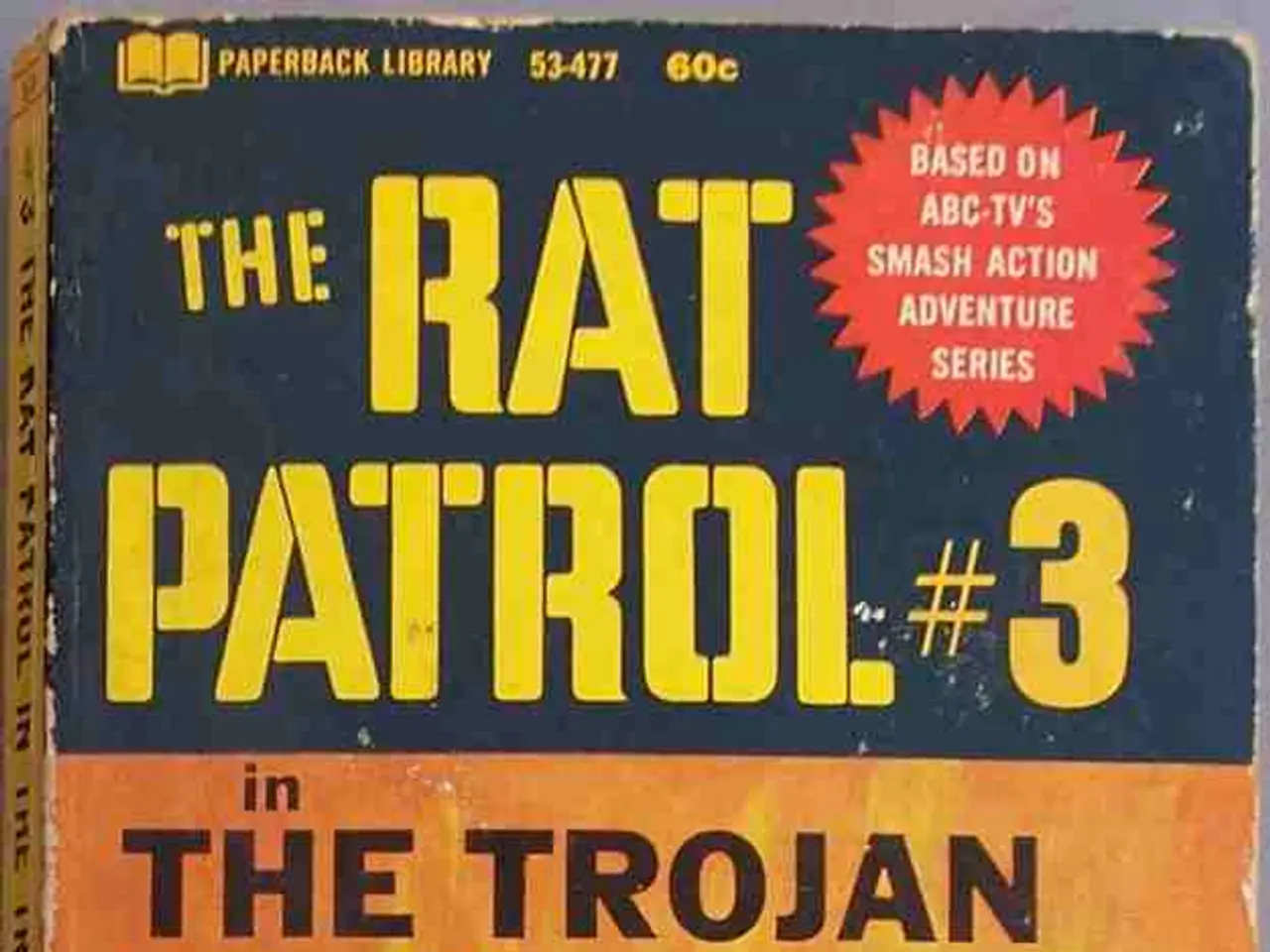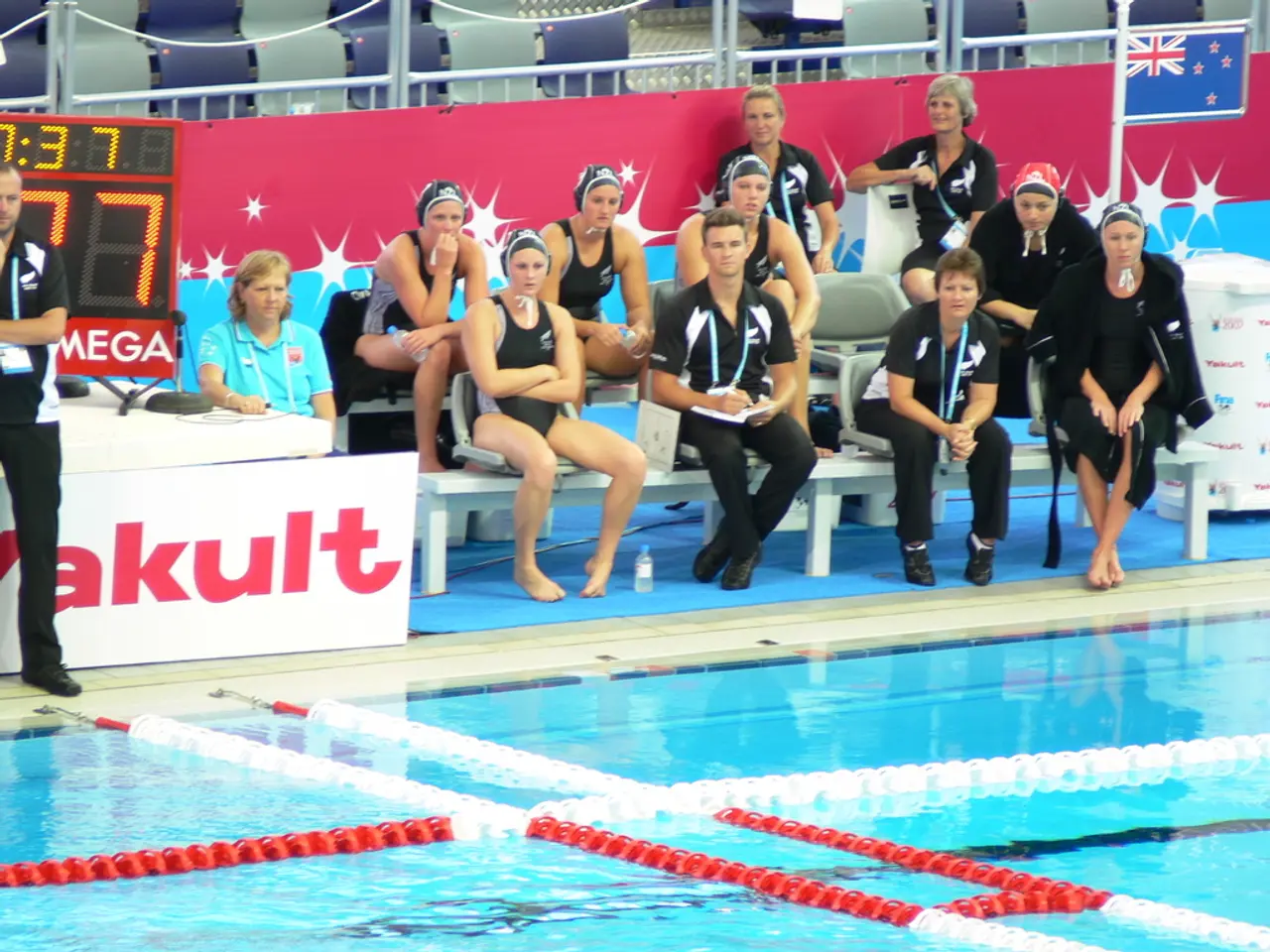Conflict Over Nitrogen: Dutch Agriculture Exceeding Expansion Bounds
The Ongoing Nitrogen Crisis in the Netherlands: A Challenging Transition Ahead
The nitrogen crisis in the Netherlands continues to be a significant issue, with high nitrogen emissions primarily stemming from intensive livestock farming. The Dutch government's target to halve nitrogen emissions has been delayed by five years to 2035, conflicting with the European Union's aim for near-zero nitrate pollution by 2050[1].
The agricultural sector, particularly intensive farming, is a major contributor to the crisis due to the large volumes of manure produced. Farmers are currently facing high costs to dispose of excess slurry[2]. To address this, plans are being made to reduce emissions by 42-46% relative to 2019 levels by 2030. These plans include emission limits at the farm level, compulsory measures in the most nitrogen-sensitive Natura-2000 zones, and stronger support mechanisms such as buyout schemes and innovation investments[5].
The political landscape in the Netherlands has made it difficult for the government to implement necessary measures. The Dutch Farmer-Citizen Movement (BBB), which has close ties with the livestock feed and agricultural input industries, has been a significant force in the country's politics. The BBB has successfully broadened its agenda to speak to urban-rural cleavages[4].
The BBB's rise to power was evident in the recent provincial elections, where they emerged as the biggest winner[3]. The Dutch government's nitrogen action programme (PAS) was struck down by a 2019 Council of State decision[2]. The BBB's opposition to the PAS and other regulatory measures has led to significant protests since 2019[3].
The nitrogen crisis challenges the Dutch model of intensive, export-oriented agriculture, which is under scrutiny for its environmental unsustainability and regulatory compliance issues[1]. The European Green Deal's Farm to Fork strategy aims for coherence across all sectors and policies, but major inconsistencies remain due to the parallel existence with the Common Agricultural Policy (CAP) and the lack of alignment between the two policies[6].
Upcoming prospects involve stronger regulatory enforcement, potential compulsory land-use changes, and ongoing debates balancing agricultural productivity, environmental goals, and rural economic viability. These dynamics suggest a prolonged and complex transition ahead, with significant implications for food production methods, environmental policy, and political stability in the Netherlands.
Key points:
| Aspect | Current Status | Future Prospects | |-----------------------|------------------------------------------------------------------------------------------------------------------|-------------------------------------------------------------------------| | Nitrogen emissions | High, triple EU average mainly from intensive livestock farming; government delayed halving targets to 2035 | Plans to reduce emissions 42-46% by 2030; possible fines for non-compliance | | Agricultural impact | Intensive farming producing large manure volumes; farmers paying high costs to dispose of excess slurry | Emission limits per farm, land swaps near sensitive zones, innovation/support schemes | | Food policy | Conflict between maintaining export-oriented high productivity and environmental compliance pressures | Shift towards more sustainable agriculture, with stricter regulation and farmer buyout support | | Political conflicts | Significant farmer protests since 2019 court ruling; NGO lawsuits against government; disputes over regulation | Continued political tension; government pressured by courts and EU; involvement of local authorities in co-creating solutions | | Regulatory compliance | Dutch government's nitrogen action programme (PAS) struck down by a 2019 Council of State decision | Stronger regulatory enforcement, potential compulsory land-use changes | | Political landscape | Dutch Farmer-Citizen Movement (BBB) emerged as the biggest winner in recent provincial elections | Ongoing debates balancing agricultural productivity, environmental goals, and rural economic viability | | EU Policy Alignment | European Green Deal's Farm to Fork strategy aims for coherence across all sectors and policies | Major inconsistencies remain due to the parallel existence with the Common Agricultural Policy (CAP) |
In conclusion, the Dutch nitrogen crisis remains unresolved with legal, environmental, economic, and social dimensions deeply intertwined. The government and stakeholders are negotiating a difficult agricultural transition balancing emission reductions with food production and rural livelihoods[1][3][5]. The rise of the BBB and the ongoing disputes over regulation suggest a prolonged period of political tension.
- The high nitrogen emissions in the Netherlands, primarily due to intensive livestock farming, are causing a significant environmental crisis, with the Dutch government having to delay their target to halve these emissions by five years.
- Plans are being made to reduce nitrogen emissions by 42-46% relative to 2019 levels by 2030, with measures including emission limits at farm level, compulsory measures in sensitive Natura-2000 zones, and stronger support mechanisms.
- Political conflicts in the Netherlands have made it difficult for the government to implement necessary measures, with the Dutch Farmer-Citizen Movement (BBB) being a major factor in the country's politics and opposing regulatory measures like the nitrogen action programme (PAS).
- The nitrogen crisis is having significant implications for the Dutch model of intensive, export-oriented agriculture, and the European Green Deal's Farm to Fork strategy aims to shift towards more sustainable agriculture in the future, but major inconsistencies remain due to the parallel existence with the Common Agricultural Policy (CAP).
